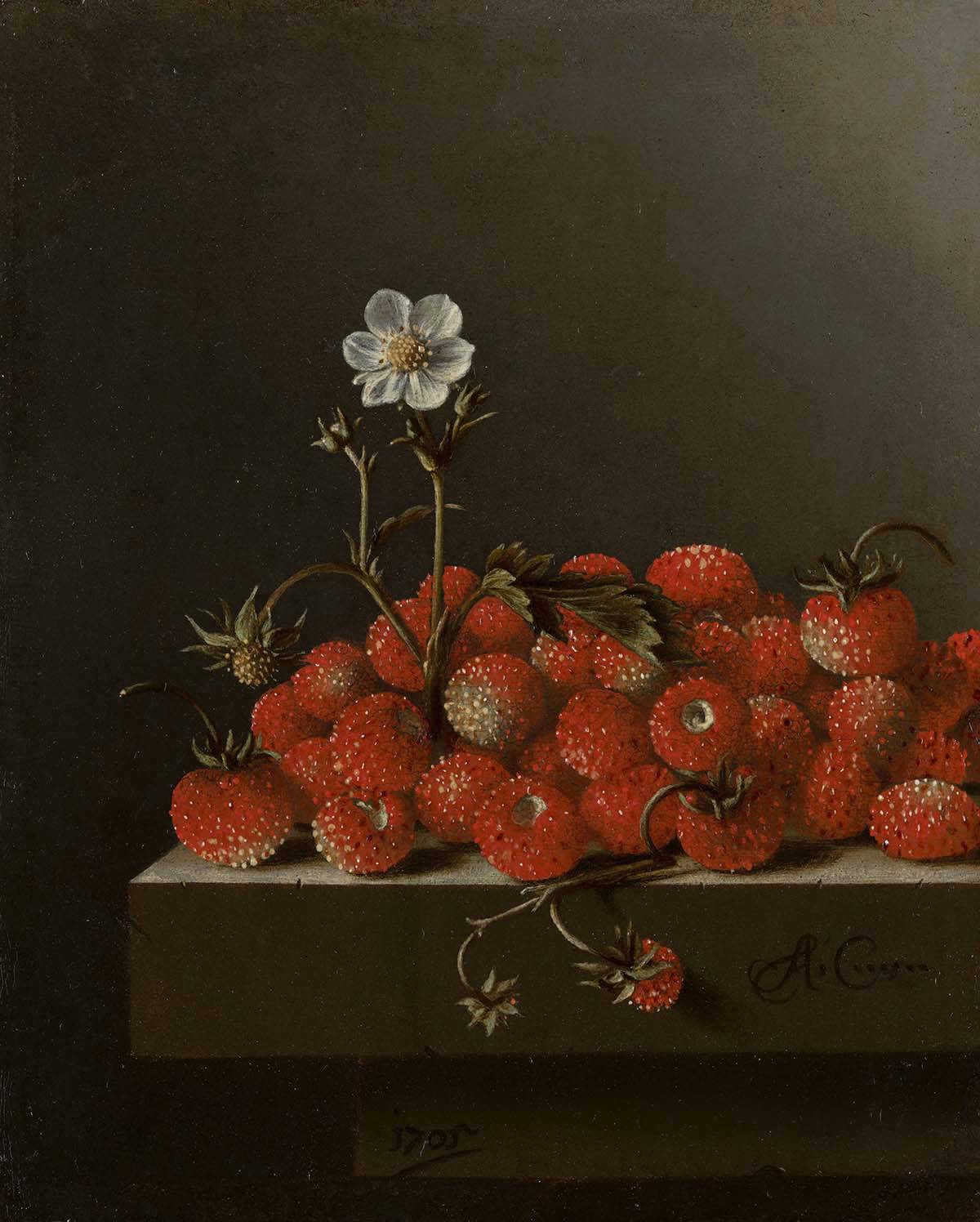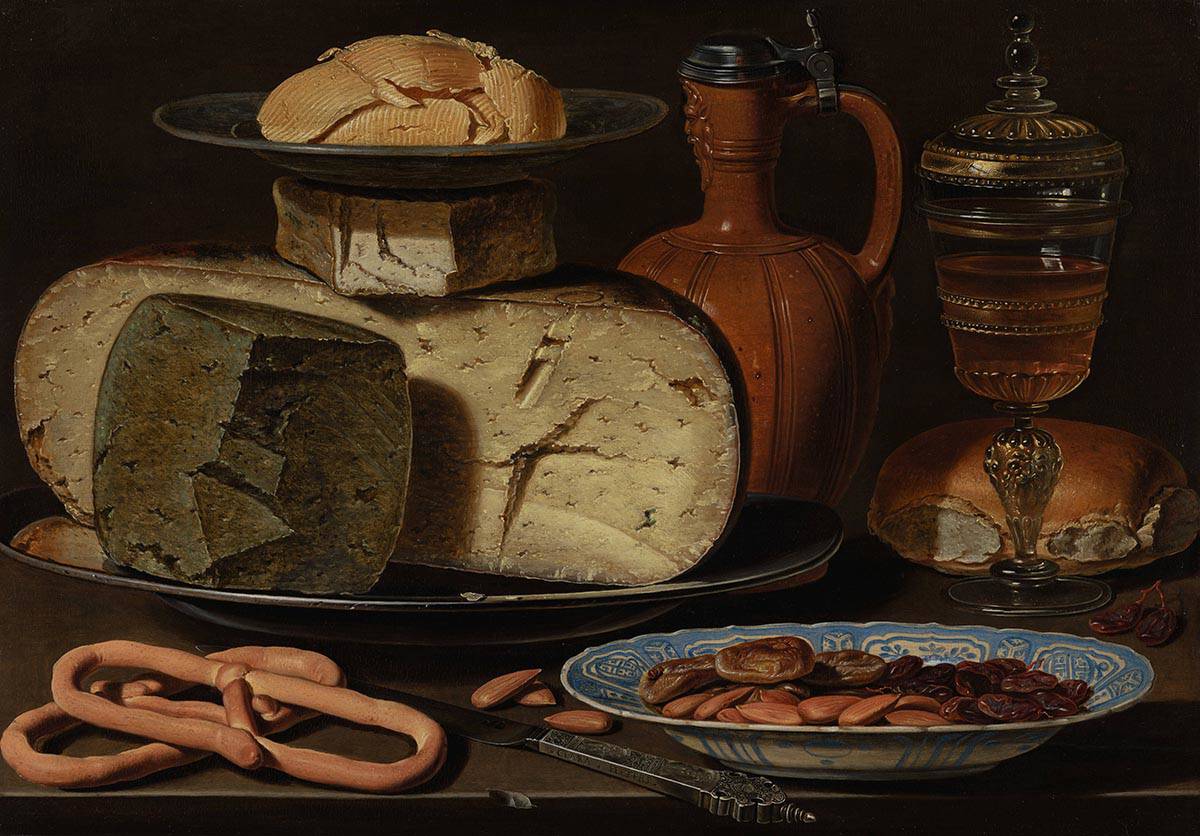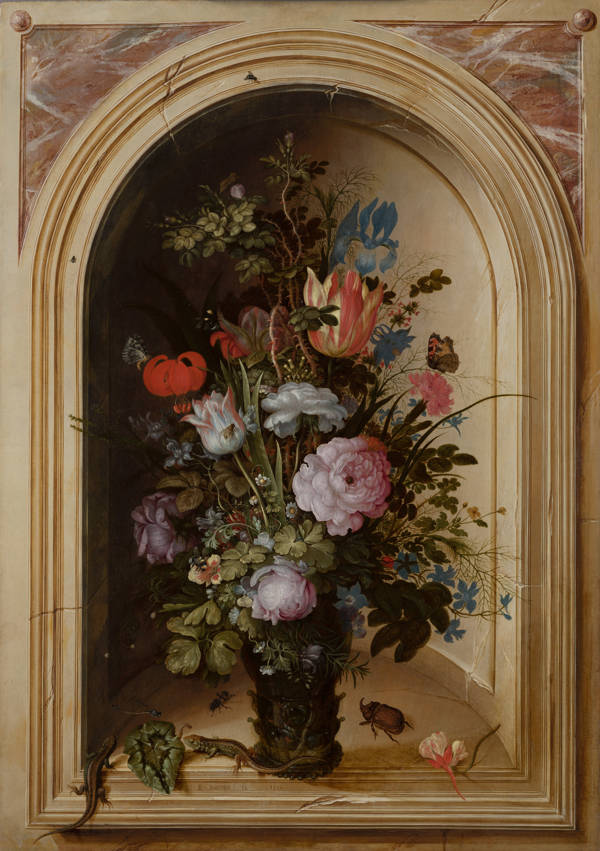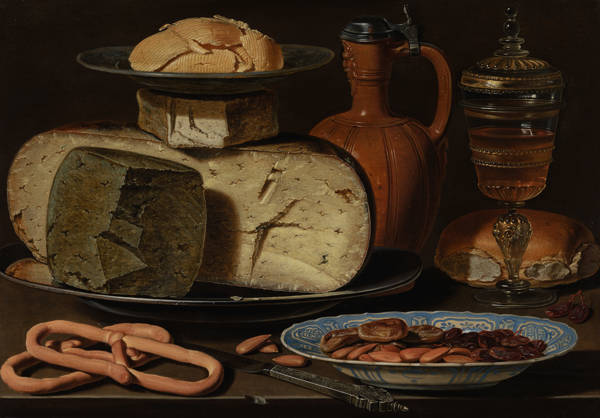A genre of its own
The still life didn’t emerge as an independent genre until the 17th century. Flowers and fruit featured in Roman frescos, or as part of religious art in the Middle Ages, but were not the main subject. Still lifes became extremely popular in the 17th century, especially in the Netherlands and Flanders, because wealthy people liked to hang them in their homes.
Painters began to specialise – some concentrated on fruit still lifes, others on flower still lifes or vanitas still lifes. This allowed them to perfect their technique, develop their own style and, importantly, serve their own market. In the 17th century, still lifes often featured exotic commodities, such as spices, animals, or fruit from the other side of the globe. They were a way for the rich to show how important or affluent they were. A painting was also a status symbol.













